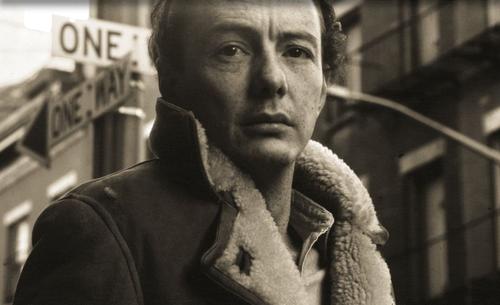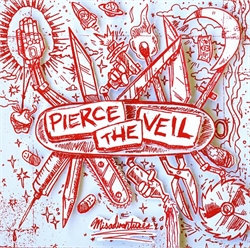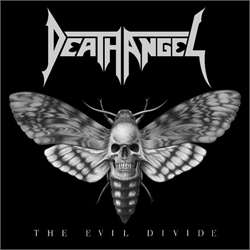Биография "Fred Neil"
<< Вернуться к списку всех песен "Fred Neil"
Fred Neil (March 16, 1936 – July 7, 2001) was an American folk singer-songwriter in the 1960s and early 1970s. He did not achieve commercial success as a performer, and is mainly known through other people’s recordings of his material – particularly «Everybody’s Talkin’», which became a hit for Harry Nilsson after being used for the film Midnight Cowboy. Though highly regarded by contemporary folk singers, he was reluctant to tour (something he shared with Nilsson), and mainly spent the last 30 years of his life assisting with the preservation of dolphins.
Born in Cleveland, Ohio and raised in St. Petersburg, Florida, Neil was exposed to music at an early age, travelling around the US with his father who was a representative for Wurlitzer jukeboxes. Neil was one of the singer-songwriters who worked out of New York City’s Brill Building, a center for music industry offices. While composing at the Brill Building for other artists, Neil also recorded six mostly rockabilly-pop oriented singles for different labels as a solo artist. He wrote songs that were taken by early rock and roll artists such as Buddy Holly («Come Back Baby» 1958) and Roy Orbison («Candy Man» 1961).
He met Vince Martin in 1961, and they formed a singing partnership; his first LP, Tear Down The Walls (1965) was recorded with Martin. During 1965 and 1966 Neil was joined on many live sets by the Seventh Sons, a trio trio led by Buzzy Linhart on guitar and vibes. Neil released Bleecker & MacDougal on Elektra Records in 1965, reissued in 1970 as A Little Bit of Rain. Fred Neil (released in 1966, relaunched in 1969 as Everybody’s Talkin’) was recorded during his residences in Greenwich Village and Coconut Grove, Florida, respectively (although for the latter, one session took place in Los Angeles).
After «Everybody’s Talkin’», Neil’s best-known song is «The Dolphins», which was later recorded by several artists including Tim Buckley, for whom Neil was a major influence. Interested in dolphins since the mid-1960s, when he had begun visiting the Miami Seaquarium, with Ric O’Barry in 1970 Neil founded The Dolphin Research Project, an organization dedicated (according to Neil himself) to stopping the capture, trafficking and exploitation of dolphins worldwide. Increasingly involved in that pursuit, Neil progressively disappeared from the recording studio and live performance, with only occasional performances in the rest of the 1970s.
Neil left Woodstock in the mid-1970s and spent his remaining decades on the shores of southern Florida, involved in The Dolphin Project. After playing with Stephen Stills at New York City’s Madison Square Garden in 1971, Neil began a long retirement, performing in public mostly at gigs for the Dolphin Project Revue in Coconut Grove, although in 1977 he played a benefit show for the Revue in Tokyo. A live date occurred in July 1975 at The Montreux Jazz Festival,[10] when Neil played with his core group of John Sebastian on harp, Harvey Brooks on bass, and Pete Childs on guitar. Michael Lang, one of the organizers of the 1969 Woodstock Festival and a 1970s Coconut Grove scene habituée, tried unsuccessfully to release this as a live LP. His last public performance was in 1981 at an outdoor concert at the Old Grove Pub in Coconut Grove, where he joined Buzzy Linhart for one song and stayed onstage for the rest of the set.
Many of Neil’s 1970s recordings remain unissued, including a 1973 session with Quicksilver Messenger Service guitarist John Cipollina and some Woodstock recordings with guitarist Arlen Roth. In a later interview, Ric O’Barry claimed that Neil recorded two albums of all cover songs between 1977 and 1978 that were buried by Columbia Records. According to Barry, he produced the first of the recordings in the sessions in Miami. Neil was joined by Pete Childs on guitar, John Sebastian on harmonica, and Harvey Brooks on bass. The second album was more fully arranged, with Neil accompanied by the New York session band Stuff and some old friends like Slick Aguilar. The songs on these albums were written by Bobby Charles, John Braheny, Bobby Ingram, and Billy Roberts (composer of «Hey Joe»).
Neil died of natural causes in 2001, as he battled skin cancer.
Neil left Woodstock in the mid-1970s and spent his remaining decades on the shores of southern Florida, involved in The Dolphin Project. After playing with Stephen Stills at New York City’s Madison Square Garden in 1971, Neil began a long retirement, performing in public mostly at gigs for the Dolphin Project Revue in Coconut Grove, although in 1977 he played a benefit show for the Revue in Tokyo. A live date occurred in July 1975 at The Montreux Jazz Festival,[10] when Neil played with his core group of John Sebastian on harp, Harvey Brooks on bass, and Pete Childs on guitar. Michael Lang, one of the organizers of the 1969 Woodstock Festival and a 1970s Coconut Grove scene habituée, tried unsuccessfully to release this as a live LP. His last public performance was in 1981 at an outdoor concert at the Old Grove Pub in Coconut Grove, where he joined Buzzy Linhart for one song and stayed onstage for the rest of the set.
Many of Neil’s 1970s recordings remain unissued, including a 1973 session with Quicksilver Messenger Service guitarist John Cipollina and some Woodstock recordings with guitarist Arlen Roth. In a later interview, Ric O’Barry claimed that Neil recorded two albums of all cover songs between 1977 and 1978 that were buried by Columbia Records. According to Barry, he produced the first of the recordings in the sessions in Miami. Neil was joined by Pete Childs on guitar, John Sebastian on harmonica, and Harvey Brooks on bass. The second album was more fully arranged, with Neil accompanied by the New York session band Stuff and some old friends like Slick Aguilar. The songs on these albums were written by Bobby Charles, John Braheny, Bobby Ingram, and Billy Roberts (composer of «Hey Joe»).
Neil died of natural causes in 2001, as he battled skin cancer.
Born in Cleveland, Ohio and raised in St. Petersburg, Florida, Neil was exposed to music at an early age, travelling around the US with his father who was a representative for Wurlitzer jukeboxes. Neil was one of the singer-songwriters who worked out of New York City’s Brill Building, a center for music industry offices. While composing at the Brill Building for other artists, Neil also recorded six mostly rockabilly-pop oriented singles for different labels as a solo artist. He wrote songs that were taken by early rock and roll artists such as Buddy Holly («Come Back Baby» 1958) and Roy Orbison («Candy Man» 1961).
He met Vince Martin in 1961, and they formed a singing partnership; his first LP, Tear Down The Walls (1965) was recorded with Martin. During 1965 and 1966 Neil was joined on many live sets by the Seventh Sons, a trio trio led by Buzzy Linhart on guitar and vibes. Neil released Bleecker & MacDougal on Elektra Records in 1965, reissued in 1970 as A Little Bit of Rain. Fred Neil (released in 1966, relaunched in 1969 as Everybody’s Talkin’) was recorded during his residences in Greenwich Village and Coconut Grove, Florida, respectively (although for the latter, one session took place in Los Angeles).
After «Everybody’s Talkin’», Neil’s best-known song is «The Dolphins», which was later recorded by several artists including Tim Buckley, for whom Neil was a major influence. Interested in dolphins since the mid-1960s, when he had begun visiting the Miami Seaquarium, with Ric O’Barry in 1970 Neil founded The Dolphin Research Project, an organization dedicated (according to Neil himself) to stopping the capture, trafficking and exploitation of dolphins worldwide. Increasingly involved in that pursuit, Neil progressively disappeared from the recording studio and live performance, with only occasional performances in the rest of the 1970s.
Neil left Woodstock in the mid-1970s and spent his remaining decades on the shores of southern Florida, involved in The Dolphin Project. After playing with Stephen Stills at New York City’s Madison Square Garden in 1971, Neil began a long retirement, performing in public mostly at gigs for the Dolphin Project Revue in Coconut Grove, although in 1977 he played a benefit show for the Revue in Tokyo. A live date occurred in July 1975 at The Montreux Jazz Festival,[10] when Neil played with his core group of John Sebastian on harp, Harvey Brooks on bass, and Pete Childs on guitar. Michael Lang, one of the organizers of the 1969 Woodstock Festival and a 1970s Coconut Grove scene habituée, tried unsuccessfully to release this as a live LP. His last public performance was in 1981 at an outdoor concert at the Old Grove Pub in Coconut Grove, where he joined Buzzy Linhart for one song and stayed onstage for the rest of the set.
Many of Neil’s 1970s recordings remain unissued, including a 1973 session with Quicksilver Messenger Service guitarist John Cipollina and some Woodstock recordings with guitarist Arlen Roth. In a later interview, Ric O’Barry claimed that Neil recorded two albums of all cover songs between 1977 and 1978 that were buried by Columbia Records. According to Barry, he produced the first of the recordings in the sessions in Miami. Neil was joined by Pete Childs on guitar, John Sebastian on harmonica, and Harvey Brooks on bass. The second album was more fully arranged, with Neil accompanied by the New York session band Stuff and some old friends like Slick Aguilar. The songs on these albums were written by Bobby Charles, John Braheny, Bobby Ingram, and Billy Roberts (composer of «Hey Joe»).
Neil died of natural causes in 2001, as he battled skin cancer.
Neil left Woodstock in the mid-1970s and spent his remaining decades on the shores of southern Florida, involved in The Dolphin Project. After playing with Stephen Stills at New York City’s Madison Square Garden in 1971, Neil began a long retirement, performing in public mostly at gigs for the Dolphin Project Revue in Coconut Grove, although in 1977 he played a benefit show for the Revue in Tokyo. A live date occurred in July 1975 at The Montreux Jazz Festival,[10] when Neil played with his core group of John Sebastian on harp, Harvey Brooks on bass, and Pete Childs on guitar. Michael Lang, one of the organizers of the 1969 Woodstock Festival and a 1970s Coconut Grove scene habituée, tried unsuccessfully to release this as a live LP. His last public performance was in 1981 at an outdoor concert at the Old Grove Pub in Coconut Grove, where he joined Buzzy Linhart for one song and stayed onstage for the rest of the set.
Many of Neil’s 1970s recordings remain unissued, including a 1973 session with Quicksilver Messenger Service guitarist John Cipollina and some Woodstock recordings with guitarist Arlen Roth. In a later interview, Ric O’Barry claimed that Neil recorded two albums of all cover songs between 1977 and 1978 that were buried by Columbia Records. According to Barry, he produced the first of the recordings in the sessions in Miami. Neil was joined by Pete Childs on guitar, John Sebastian on harmonica, and Harvey Brooks on bass. The second album was more fully arranged, with Neil accompanied by the New York session band Stuff and some old friends like Slick Aguilar. The songs on these albums were written by Bobby Charles, John Braheny, Bobby Ingram, and Billy Roberts (composer of «Hey Joe»).
Neil died of natural causes in 2001, as he battled skin cancer.






